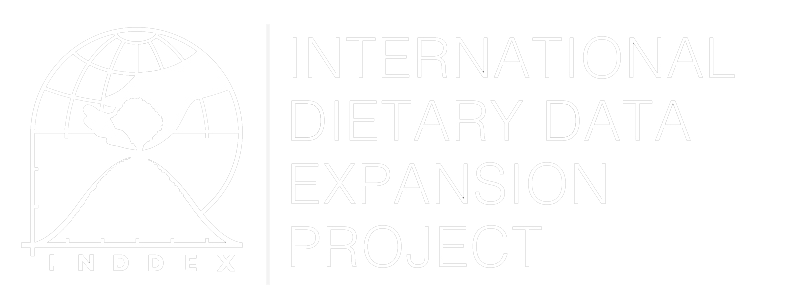Prevalence of Undernourishment %
Overview
The Prevalence of Undernourishment (PoU) is a national-level model-based indicator used to understand access to food in terms of dietary energy inadequacy. It measures the percentage of the population whose dietary energy intake is below the Minimum Dietary Energy Requirement (MDER). As one of the Sustainable Development Goals (SDGs)of Target 2.1 (End hunger, achieve food security, and improve nutrition), this indicator is produced yearly by the Food and Agriculture Organization (FAO). Given the lack of nationally representative individual dietary intake surveys available for all countries, it is produced using information on dietary energy supply from the Food Balance Sheet (FBS) data for global monitoring purposes.
Method of Construction
The PoU is based on a probability distribution characterized by three parameters: (1) the mean of the distribution that represents the average amount of dietary energy consumed; (2) the coefficient of variation that represents the variability that exists within the population's usual consumption; and (3) a threshold that represents the minimum amount of energy needed by a hypothetical average individual of the population to be in good health and have a level of activity that is socially acceptable, also known as the Minimum Dietary Energy Requirement (MDER). The MDER of the population is used as a proxy of the threshold and it is estimated based on a weighted average of the minimum energy requirements for each sex-age group in the population (Wanner et al., 2014). The PoU is then calculated as the percentage of the population whose consumption falls below the MDER. The PoU indicator produced by the FAO in the context of the global monitoring based on the Dietary Energy Supply is a three-year moving average. For more detailed information on how data are collected, the assumptions, and how calculations are completed by FAO, please read Cafiero (2014), which explains the technical details.
In addition, this indicator is one of several indicators included in the ADePT-FSM (Food Security Module) software package, which is a free standalone software developed by FAO and the World Bank that allows users to easily derive food security indicators from Household Consumption and Expenditure Survey (HCES) data. The software download and corresponding documentation can be found on the FAO website. Please also see the Moltedo et al. (2014) book published by the World Bank, which provides detailed instructions for analyzing food security using household survey data. See pages 54-57 in the Moltedo et al. document for details about how the ADePT software calculates the PoU.
Uses
The PoU is an internationally recognized indicator and is used by intergovernmental, non-governmental, and governmental agencies alike. As mentioned above, it is also one of the indicators for monitoring progress towards the second target of the SDGs. It can help paint a picture of macro-level food access trends and, given its widespread use for the past five decades, is useful in identifying national and global trends in population-level undernourishment (Jones et al., 2013). The PoU is also used to calculate the depth of food deficit indicator, which estimates the average per capita amount of additional energy (kcal) that undernourished individuals need to consume to reach their average dietary energy requirement (ADER). This indicator is part of the FAOSTAT Suite of Food Security Indicators and is published annually by FAO in the State of Food Insecurity (SOFI). The PoU is also one of the components of the International Food Policy Research Institute's (IFPRI) Global Hunger Index.
Strengths and Weaknesses
The PoU data are publicly available and free to access on FAOSTAT. Along with ease of access, a clear strength of this indicator is that it has been calculated for almost every country in the world over decades, allowing for standardized comparisons over time and within and across countries. However, the PoU considers only dietary energy intake, and alone it is not an appropriate indicator of nutrient adequacy or dietary quality. This is an indicator of chronic hunger that spans one year and therefore is unable to capture trends in undernourishment over short reference periods that may be associated with seasonality, price spikes, or climate-related shocks to the food system (Cafiero, 2014).
A major criticism of the PoU is that it is based on the MDER and not on the ADER, but the strong correlation between intake and requirement made it impossible to use ADER. For example, using ADER in a healthy population where all people would eat according to their requirements, we would estimate that about 50% of the population is undernourished (as some people may still be healthy while consuming less energy than the average). In using the MDER the risk of misclassification is lower (FAO Sixth World Food Survey, 1996).
Data Source
For global monitoring purposes, country-level prevalence of undernourishment is released each year by FAO using data from the Dietary Energy Supply from the FBS (after deducting losses at a retail level to the Dietary Energy Supply published in FAOSTAT). HCES can be used to generate national and sub-national PoUs using the ADePT-FSM software package. Finally, the PoU could also be estimated using individual dietary intake surveys (e.g. more than one 24-hour Dietary Recall) representative of national or sub-national population groups.
Links to Guidelines
- Cafiero (2014). Advances in Hunger Measurement: Traditional FAO Methods and Recent Innovations.
- SOFI (2015). Annex 2: Methodology for Assessing Food Security and Progress towards the International Hunger Targets.
- FAO (1996). Sixth World Food Survey.
- FAO (2018). Prevalence of Undernourishment E-Learning Course.
Links to Validation Studies
Links to Illustrative Analyses
- Meerman et al., (2012). "Global, regional, and subregional trends in undernourishment and malnutrition."
- Abegaz (2018). Prevalence of undernourishment: trend and contribution of East African countries to sub-Saharan Africa from 1991 to 2015. Agriculture & Food Security.
- Rawal et al., (2019). Prevalence of undernourishment in Indian states. Economic & Political Weekly.
- Schilp et al., (2012). High prevalence of undernutrition in Dutch community-dwelling older individuals. Nutrition.
